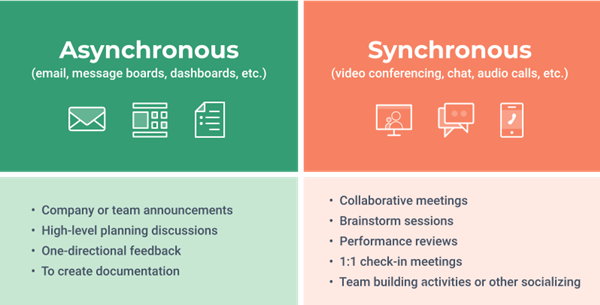
When thinking about what is affecting people at work, often the first solution is to call a meeting.
But is that the best way to find the answer?
In the last week of September (18-24), we celebrate International Week of Happiness at Work.
The amount of time we spend in meetings during our work hours can be the major influence on how productive we feel we’ve been each day.
If the amount of time increases and goes on long enough, it can result in overwork, burnout and feelings of demotivation.
When it comes to long-term happiness at work, taking back control of our time is worth the effort.
Considering the alternatives
A majority of us have thought at some stage; ‘this meeting could have been an email!’
Which gives prominence to alternatives to replace the time we spend in meetings.
Meetings can be effective for where face-to-face communication is needed, they are useful for team connection and discussion.
However, Forbes acknowledges that meetings also disrupt productivity, attention spans and motivation away from focusing and executing tasks.
In some circumstances, they can feel like forced interaction.
For companies who have a remote workforce, or with colleagues across time zones and hemispheres, meetings are not an option most of the time.
Some asynchronous communication alternatives to consider:
- Use a screen recording tool to create short, recorded video explainers.
- Email (seriously!) because it allows people to digest and send thought out responses.
- Schedule brainstorming sessions or time for questions in response to something you sent through prior.
- Invest a project management software. These can enable wider oversight of a project, tasks, due dates and allow files to be uploaded in a single place.
- Strengthen employee engagement and organic communication/connection by scheduling team catchups outside the office.
Strengthen employee engagement
Whether it’s for yourself or you’re encouraging your team to trial scheduling less meetings, the outcomes can be positive across the board.
Firstly, it can improve the quality of the meetings you do have. While it’s not possible to cancel meetings entirely, it is possible to eliminate unproductive meetings. When people are scheduled to be in a room for a clear purpose, they can be more engaged, better listeners and determined to be as productive as possible in the time allotted.
Secondly, a study by the Social Market Foundation UK found that happy employees are 12% more productive than their peers. Happy employees also take 10 times fewer sick days, and companies with happy employees outperform their competitors by 20%.
Thirdly, every organisation can tailor their own mix of synchronous and asynchronous communication to suit them.
There is no one-size-fits-all, so you don’t have to discard everything you’re doing for something entirely new.

Source: Smartsheet
Tips for combat meeting overload
Leadership expert, author, and keynote speaker Cindy Solomon recommends trying at least one of these five tips to combat meeting overload:
- Ask yourself: Do you really need the meeting?
- Invite the least number of people possible.
- Make your meetings shorter, to make them more efficient.
- Say no to other people’s meetings if your participation is not essential.
- Be ruthless with managing your time.
Incorporating an employee assistance program (EAP) into your workplace strategy not only benefits individual employees but also contributes to the overall well-being and productivity of the organisation.
By providing managers with the tools to make informed decisions about meetings and helping employees navigate challenges, an EAP reinforces a culture that prioritises both work performance and employee health.
As we observe International Week of Happiness at Work, consider the holistic advantages of an EAP that aims to foster a happier, more engaged, and resilient workforce.
Sources
- Five alternatives to having a meeting – Forbes
- How mindfulness makes a difference – CiC
- Happiness and productivity: understanding happy-productive worker – Social Market Foundation
- 11 employee happiness statistics that will blow your mind – Snacknation
- Five tips for dealing with meeting overload – Cindy Solomon, TED Talk